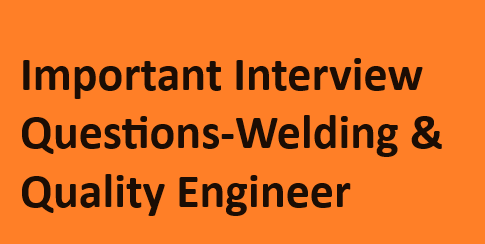Navigating an interview as a Welding & Quality Engineer demands both technical expertise and clarity of communication. This article gathers high-impact questions that are likely to surface during interviews for welding and quality-focused roles—designed to help you anticipate what’s asked and answer with confidence.
From complex metallurgical concepts like delta ferrite and P91 procedure welding, to quality assurance mechanisms such as G48 and IGC/A262 Practice E testing, these prompts probe your knowledge in materials, processes, inspection, and toughness. You’ll also encounter real-world scenarios—like welder position equivalency (e.g., “If qualified in 3G, which other positions qualify?”) and the nuances between consumables (like E9015-B91 vs. E9018-B91).
As you prepare, keep in mind that interviewers want to see your critical thinking, practical knowledge, and ability to apply standards in real-world contexts—especially in challenging environments such as sour service, high-nickel restrictions, or leak-critical applications like tube-to-tubesheet joints.
Let’s dive into these questions and equip you for success in your Welding & Quality Engineering journey!

Q.2 Why Ni is restricted up to 1% max. for sour service?
Q3. What is the role of delta ferrite in stainless steel welding?
Q4. Why PWHT is not required for stainless steel?
Q5. Explain the procedure for welding of P91 material?
Q6. What is Dilution and its effect in weld overlay or cladding?
Q7. What is G48 testing. Explain?
Q8. What is IGC testing (A262 Practice E). Explain?
Q10. If welder is qualified on SS GTAW welding, can he able to weld CS with GTAW?
Q11. Why E9015-B91 preferred for P91 material welding instead of E9018-B91?
Q12. What is carbon equivalent and how it affects weldability?
Q13. Why Ni+Mn>1.2% is restricted in P91 & P92 materials welding?
Q14. What is temper embrittlement?
Q17. Why E347 is preferred over E321 for welding of SS321 material?
Q19. What is minimum leak path in tube-to-tubesheet welding?
Q20. Enlist the elements of austenite and ferrite stabilizing elements?
Q21. What is sensitization in stainless steel?
Q22. What is hot-cracking and how it occurs?
Q23. What is pull-out test in tube to tube sheet welding and what is acceptance criteria for same?
Q24. What is DSS. Explain care to be taken for DSS welding?
Q25. Why trailing gas used for titanium welding?
Q26. Why SAW AC welding is preferred over DC for P22 material?
Q27. Difference between synthetic and non-synthetic electrodes?
Q28. What is interpass temperature and how it affects the toughness property?
Q29. From which location impact sample shall be drawn as per ASME Section. IX?
Q30. Specify some welding issue related to nickel alloys?

Very nice information 👏
Nice collection but please share answers too🙂
Really super Bro. Keep Going.
Please share answers also